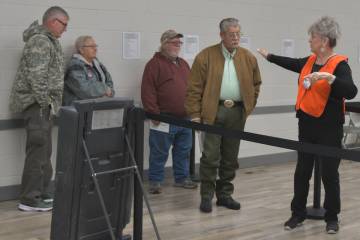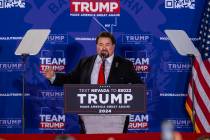Sotomayor expresses concern over court’s true threat jurisprudence
U.S. Supreme Court Justice Sonya Sotomayor agreed with her colleagues that the Court should deny review in a true-threat case out of Florida, involving a man who uttered, while drunk, that he could blow up a liquor store.
However, Sotomayor wrote a separate concurring opinion denying review in Perez v. Florida (16-6250) to express her concerns about holes in the Court’s current true-threat jurisprudence.
True threats are a narrow, unprotected category of speech. The Supreme Court explained this in Watts v. United States (1969). In the case, a young, African-American man was prosecuted and convicted for allegedly saying at an anti-war protest that if drafted, the first person he would put in his rifle scope was L.B.J, referencing then President Lyndon Baines Johnson. The Court explained that true threats were not protected speech, but that young Robert Watts had engaged more in crude political hyperbole rather than a real threat.
Many years later, in a cross-burning case, Virginia v. Black (2003), the Court defined a true threat as speech “where the speaker means to communicate a serious expression of an intent to commit an act of unlawful violence to a particular individual or group of individuals.” The Court explained that not all cross burnings are done with the necessary intent to intimidate others.
A few years ago, the Court had an opportunity to clarify its true-threat jurisprudence in Elonis v. United States (2015). However, the Court failed to address the underlying First Amendment issues.
Justice Sotomayor noted that Mr. Perez is probably spending 15 years in prison for a drunken rant, rather than something truly intended as a threat. She quoted a prosecutor in the case who acknowledged that the guy may have been “just a harmless drunk guy at the beach.”
The First Amendment issues apparently were not addressed by the lower courts, so she joined her colleagues in not reviewing Perez’s appeal.
However, Justice Sotomayor clearly wants the Court to clarify what I have termed a “muddled mess.”
“States must prove more than the mere utterance of threatening words – some level of intent is required,” she wrote. “The Court should also decide precisely what level of intent suffices under the First Amendment – a question we avoided two terms ago in Elonis.”
Justice Sotomayor should be applauded for her concern over the Court’s true-threat jurisprudence. It remains a mess.
David L. Hudson, Jr. is the author of “First Amendment: Freedom of Speech” and co-editor of “The Encyclopedia of the First Amendment.” He is the ombudsman for the First Amendment Center in Washington D.C.





















